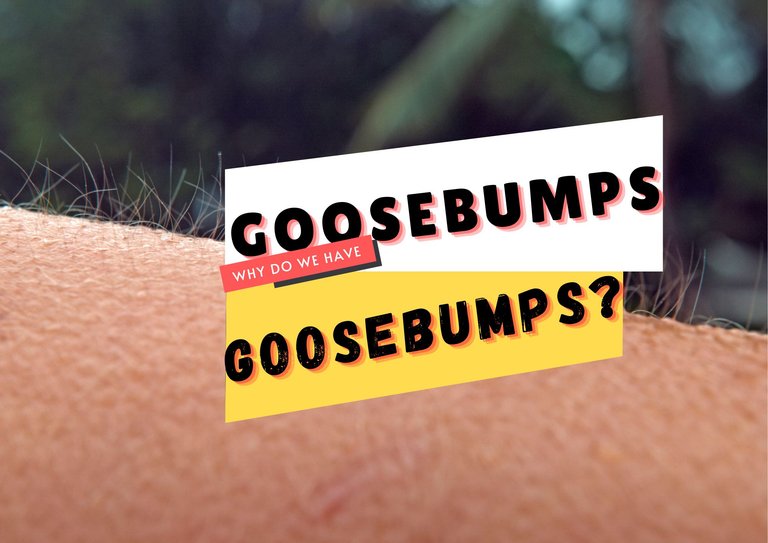
You’re watching a horror movie. The tension builds, the music swells, and just as the monster leaps out from the shadows—boom! You feel it. That prickly, tingly sensation creeping up your arms. Goosebumps. But why? What’s the point of this weird bodily reaction that makes your hair stand on end? Well, it turns out goosebumps are a little like that appendix of yours: a leftover from our evolutionary past that doesn’t do much for us now, but tells a fascinating story about where we came from.
The Original Purpose of Goosebumps: Looking Tough (or Fluffy)
Let’s rewind a few hundred thousand years. Picture our ancient, furry ancestors roaming the wild, trying not to become lunch for a sabre-toothed cat. When faced with danger, their bodies would trigger a fight-or-flight response, part of which involved—you guessed it—goosebumps. Here’s how it worked:
- Hair Standing on End: When the tiny muscles at the base of each hair follicle contracted, the hair would stand straight up. For animals with thick fur, this made them look bigger and more intimidating to predators. Think of a cat arching its back and puffing up its tail. Same idea.
- Trapping Warmth: Goosebumps also helped trap a layer of warm air close to the skin, which was handy for staying warm in cold weather. (This is why you still get goosebumps when you’re chilly.)
For our furry ancestors, goosebumps were a survival superpower. But as humans evolved and lost most of our body hair, the practical benefits of goosebumps pretty much disappeared. So why do we still get them?
Goosebumps Today: A Relic
These days, goosebumps don’t do much for us. You’re not going to scare off a bear by looking like a plucked chicken, and your sparse arm hair isn’t trapping much warmth. But the reflex is still hardwired into our nervous system, and it gets triggered by a few key things:
- Cold Temperatures: When you’re chilly, your body tries to fluff up your nonexistent fur to keep warm. It’s not very effective, but hey, it’s the thought that counts.
- Strong Emotions: That spine-tingling feeling during a powerful song, a moving speech, or a scary movie? That’s your sympathetic nervous system kicking in, just like it did for your ancestors facing down a predator.
- Fear or Surprise: Even if you’re not in real danger, your body still reacts to sudden scares or adrenaline rushes with a good old case of goosebumps.
Fun Fact: Goosebumps Have a Cool Scientific Name
If you want to impress your friends, drop this tidbit: the scientific term for goosebumps is cutis anserina. It literally means “goose skin” in Latin, because—you guessed it—the bumps look like the skin of a plucked goose. (Not the most glamorous comparison, but it gets the point across.)
Why Do We Keep This Quirky Reflex?
You might be wondering, “If goosebumps are useless, why hasn’t evolution gotten rid of them?” Well, evolution doesn’t clean house very often. Traits that aren’t harmful often stick around, even if they’re not helpful anymore. And let’s be honest, goosebumps are kind of fun. They’re a physical reminder of our connection to the past—a little evolutionary souvenir that pops up when we’re cold, scared, or moved by something beautiful.
Final Thoughts: Embrace the Bumps
So, the next time you get goosebumps, don’t just brush them off (literally or figuratively). Take a moment to appreciate this quirky little reflex that links you to your furry, fear-facing ancestors. Whether it’s from a chilly breeze, a jump scare, or a breathtaking piece of music, goosebumps are a reminder that our bodies are full of fascinating stories—even if some of those stories are a little outdated.
And hey, if nothing else, they make for a great conversation starter. Just don’t try to intimidate a bear with them.
